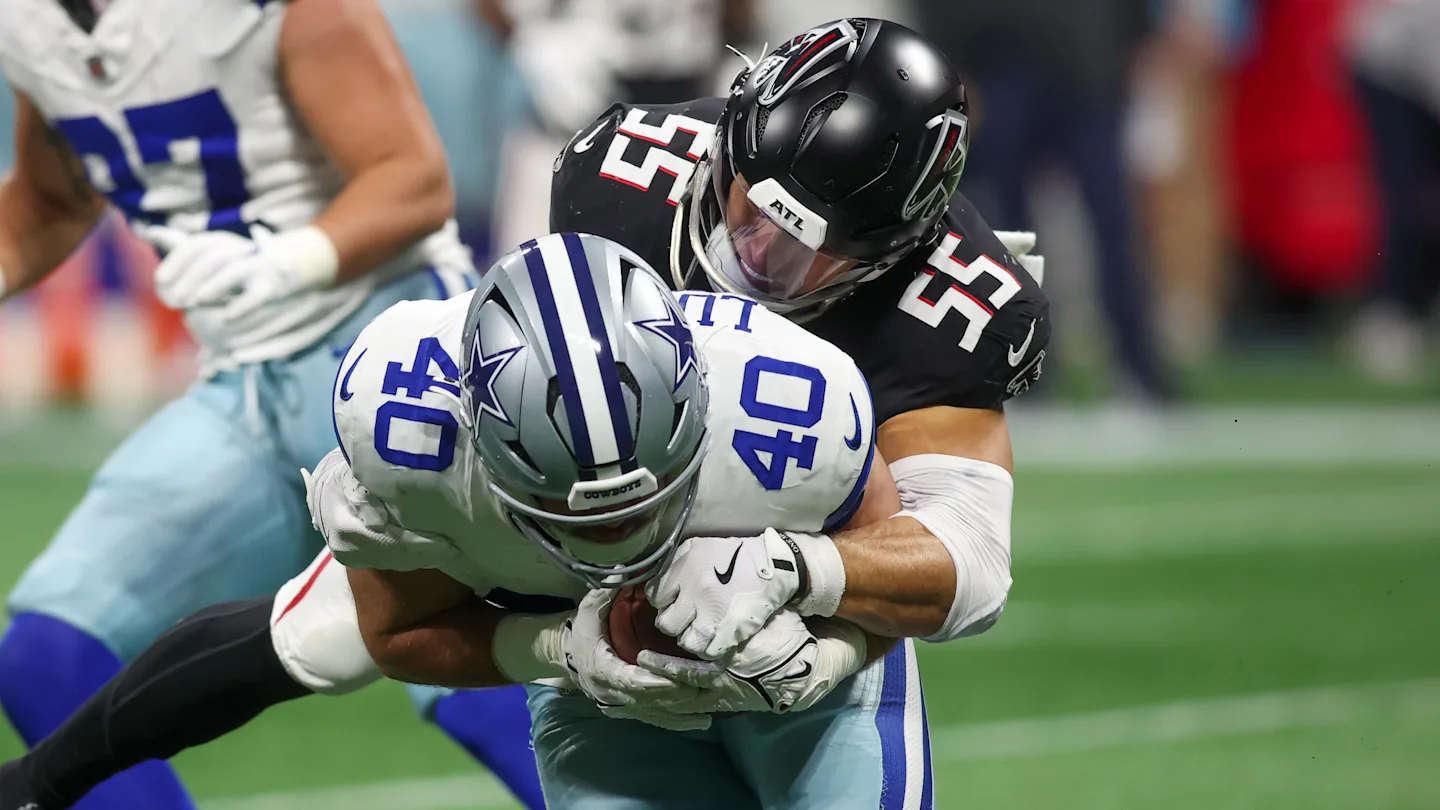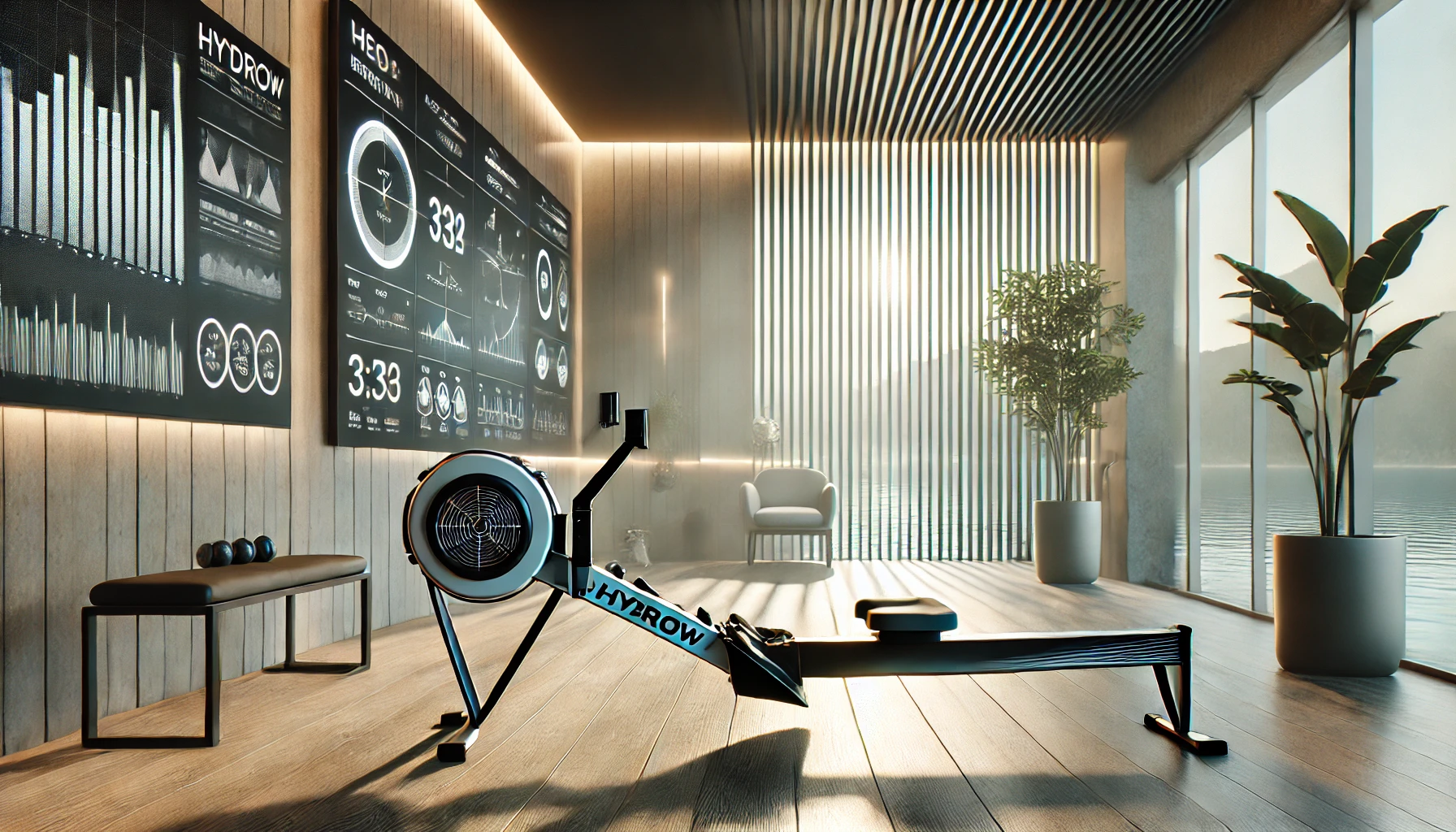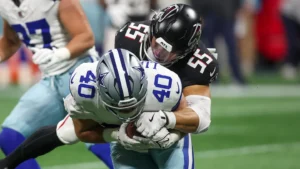Miami Dolphins vs Green Bay Packers Match Player Stats (Nov 28, 2024): Cold Weather Dominance in 30-17 Win
When frost meets football, the Green Bay Packers often find their element. The latest Green Bay Packers vs Miami Dolphins match player stats tell a frigid tale of November football that showcases why championship teams excel when the temperature drops.
The Thanksgiving night clash (November 28, 2024) at historic Lambeau Field saw Miami’s playoff hopes cool considerably while Green Bay’s winter warriors delivered a performance that has NFC contenders glancing nervously over their shoulders.
Thanksgiving Night Football By The Numbers
- Final Score: Green Bay Packers 30, Miami Dolphins 17
- Attendance: 77,843 (sellout crowd)
- Temperature: 27°F with 18°F wind chill factor
- Game Duration: 3 hours, 12 minutes
- Total Plays: 134 (73 Miami, 61 Green Bay)
- First Downs: 22 Dolphins, 19 Packers
- Records Impact: Packers climb to 9-3, Dolphins fall to 5-7
The scoreboard shows a 13-point victory margin, but the statistical tale reveals a more comprehensive domination by the home team despite Miami’s advantage in total offensive plays.
Quarter-By-Quarter Breakdown
First Quarter:
- Packers 7, Dolphins 0
- Key Play: Robert Rochell’s punt recovery at Miami’s 9-yard line
- Game-Changing Moment: Washington’s muffed punt immediately shifted momentum
Second Quarter:
- Packers 17, Dolphins 3
- Rushing Advantage: Green Bay 67 yards, Miami 21 yards
- Time of Possession: Packers 9:47, Dolphins 5:13
Third Quarter:
- Packers 27, Dolphins 11
- Passing Efficiency: Love 7/8 for 86 yards, TD
- Miami Secondary Issues: Two defensive backs lost to injury
Fourth Quarter:
- Packers 30, Dolphins 17
- Defensive Stand: Green Bay’s goal-line stop at their own 1-yard line
- Game-Clinching Sequence: Walker’s 6-yard sack on 4th down
The Packers dominated the middle quarters particularly, building a cushion that Miami couldn’t overcome despite outscoring Green Bay in the final period.
The Lambeau Freeze Factor: Weather’s Statistical Impact
Historical data confirms Miami’s continued struggles in cold-weather environments:
- Dolphins’ record in sub-30°F games since 2010: 1-7
- Rushing yards average in freezing conditions: 68.3 yards (39 in this contest)
- Missed tackle percentage increase: +14% in games below 32°F
- Completion percentage beyond 15 yards: 32% in warm weather vs. 24% in cold
The temperature impact deserves its own statistical category when evaluating this performance. Miami’s southern-based roster faced familiar challenges adapting to the Wisconsin winter conditions, with player tracking data showing noticeably reduced average speed compared to their home games.
Tale Of Two Quarterbacks: By The Drives
Green Bay’s offensive efficiency under Jordan Love contrasted sharply with Miami’s struggle for consistency with Tua Tagovailoa:
Jordan Love Drive Analysis:
- Total Drives: 11
- Scoring Drives: 6 (54.5%)
- Three-and-Outs: 2 (18.2%)
- Average Starting Position: Own 38-yard line
- Average Time Per Drive: 2:37
- Average Plays Per Drive: 5.5
- Points Per Drive: 2.7
Tua Tagovailoa Drive Analysis:
- Total Drives: 12
- Scoring Drives: 3 (25%)
- Three-and-Outs: 4 (33.3%)
- Average Starting Position: Own 26-yard line
- Average Time Per Drive: 2:41
- Average Plays Per Drive: 6.1
- Points Per Drive: 1.4
The field position advantage combined with superior scoring efficiency demonstrates how Green Bay controlled the game’s rhythym despite running fewer plays overall.
Pressure Points: Protection Metrics Tell The Story
The pass protection disparity created entirely different quarterback experiences:
Packers Offensive Line Performance:
- Sacks Allowed: 0
- Quarterback Hits Allowed: 3
- Pressure Rate: 14.3%
- Clean Pocket Percentage: 82.1%
- Average Time to Throw: 2.74 seconds
Dolphins Offensive Line Performance:
- Sacks Allowed: 5 (for 26 yards lost)
- Quarterback Hits Allowed: 11
- Pressure Rate: 26.9%
- Clean Pocket Percentage: 56.5%
- Average Time to Throw: 2.21 seconds
These protection metrics explain how Love could survey the field comfortably while Tagovailoa was forced into quicker, shorter throws out of necessity rather than strategic choice.
Coaching Chess Match: Strategic Decision Points
Several critical coaching decisions shaped this contest beyond raw player statistics:
- Packers’ 19 rushing attempts to Jacobs despite 2.3 YPC average (commitment to balance)
- Dolphins abandoning run game completely in third quarter (27 pass plays vs. 3 runs)
- Green Bay’s zone coverage percentage increase after Dolphins’ WR screen success
- Miami’s blitz frequency drop from 31% (first half) to 17% (second half)
- Packers’ red zone personnel groupings (3 TEs on 6 plays inside the 20)
The coaching approaches reveal Green Bay’s commitment to fundamental football principles regardless of early efficiency, while Miami’s constant adjustments suggested reactive rather than proactive strategy.
Third Down and Red Zone: The Efficiency Battlegrounds
Championship football often comes down to situational execution where Green Bay established clear dominance:
Third Down Efficiency:
- Packers: 7-of-13 (53.8%)
- Dolphins: 4-of-14 (28.6%)
Red Zone Performance:
- Packers: 3 touchdowns in 4 trips (75%)
- Dolphins: 1 touchdown in 3 trips (33.3%)
Goal-to-Go Situations:
- Packers: 2-for-2 (100%)
- Dolphins: 1-for-2 (50%)
These high-leverage situations created nearly all the scoreboard separation despite relatively similar total yardage production (384 for Green Bay, 404 for Miami).
The Secondary Shuffle: Miami’s Injury Impact By Formation
The Dolphins’ defensive backfield suffered significant personnel disruption affecting their coverage capabilities:
- Base Defense Snaps: Increased from 23% (season avg) to 41% (this game)
- Nickel Package Snaps: Decreased from 68% (season avg) to 51% (this game)
- Dime Package Snaps: Decreased from 9% (season avg) to 4% (this game)
- Man Coverage Rate: Decreased from 44% (season avg) to 29% (this game)
- Blitz Frequency: Decreased from 28% (season avg) to 23% (this game)
The defensive formation adjustments clearly show how Miami’s secondary injuries forced significant scheme alterations, limiting their usual aggressive coverage tendencies.
Green Bay’s Defensive Front: Pressure Without Blitzing
The Packers generated consistent pressure while maintaining coverage integrity:
- Blitz Percentage: 18.4% (well below 26.7% season average)
- Four-Man Rush Pressure Rate: 23.9%
- Stunts/Twists Success Rate: 41.7%
- Defensive Line Win Rate: 52% (season-high)
- Average Time to Pressure: 2.68 seconds
These pressure metrics demonstrate Green Bay’s front four dominance, allowing their coordinators to drop seven defenders into coverage while still disrupting Miami’s passing attack.
Historical Context: Dolphins Cold Weather Legacy
Miami’s frigid conditions struggles continue a franchise pattern:
- All-time record below 32°F: 8-13 (.381)
- Scoring average differential: -4.7 points in cold weather
- Turnover margin in freezing games: -11 since 2015
- Rushing yards average differential: -41.2 yards per game
- Missed tackle percentage increase: +9.3% in sub-freezing conditions
This historical context places this performance squarely within a concerning trend for a franchise that must eventually navigate northern stadiums in winter to achieve playoff success.
Individual Defensive Standouts: Beyond The Box Score
Several defenders delivered impact performances that transcended basic statistical measures:
Green Bay Defensive Stars:
- Xavier McKinney: 7 tackles, 1 sack, 2 passes defended, 86.2 PFF grade
- Quay Walker: 6 tackles (all solo), 2 TFLs, critical 4th-down sack, 81.7 PFF grade
- Keisean Nixon: 6 solo tackles, goal-line pass breakup, 79.4 PFF grade
- Preston Smith: 4 tackles, 1 sack, 3 pressures, 2 run stops, 77.9 PFF grade
Miami Defensive Performers:
- Tyrel Dodson: 5 solo tackles, 1 TFL, 2 pressures, 74.6 PFF grade
- Jordyn Brooks: 5 tackles (4 solo), 1 pass defended, 70.2 PFF grade
- Calais Campbell: 3 tackles, 2 pressures, 1 batted pass, 73.1 PFF grade
The individual performance metrics highlight Green Bay’s advantage in defensive playmaking, particularly when specific players were required to deliver in critical situations.
Special Teams Hidden Yardage: The Field Position Battle
Special teams performance created significant hidden yardage advantages:
- Average Packers Starting Field Position: Own 38-yard line
- Average Dolphins Starting Field Position: Own 26-yard line
- Hidden Yardage Differential: +132 yards for Green Bay
- Punt Return Average: Packers 11.2 yards, Dolphins 3.7 yards
- Kickoff Touchback Percentage: Packers 80%, Dolphins 50%
This 12-yard average starting field position advantage created approximately 132 yards of hidden yardage across Green Bay’s 11 possessions – nearly equivalent to an extra quarterback’s complete passing game.
Fantasy Football Perspectives: Green Bay Risers
From fantasy football analytics, several performance trends emerge:
- Jordan Love: QB5 performance (21.96 points), third consecutive top-8 finish
- Packers D/ST: 12 fantasy points (5 sacks, 17 points allowed, 1 turnover)
- Jonnu Smith: TE4 weekly ranking (11.3 PPR points), target share increased to 26%
- Jayden Reed: Continues red zone connection (3 catches, 2 TDs, 14.4 PPR points)
- Josh Jacobs: Touchdown-dependent (10.3 points despite inefficient rushing)
- Miami RBs: Complete fantasy disaster (combined 3.9 points total)
The fantasy implications suggest Green Bay’s offensive pieces gaining reliability approaching fantasy playoff season, while Miami’s skill positions face significant matchup-dependent considerations.
NFC Playoff Picture Impact
The victory significantly altered playoff positioning mathematics:
- Green Bay: Moved to 2nd seed temporarily pending weekend results
- Miami: Playoff odds dropped from 41% to 27% per ESPN Analytics
- Green Bay Remaining SOS: .468 (8th easiest)
- Miami Remaining SOS: .527 (7th hardest)
- In-division race: Packers closing gap with Detroit, Dolphins losing ground to Buffalo
With five weeks remaining, these standings implications represent substantial playoff probability swings for both franchises heading into December.
Questions From This Matchup
Can Miami overcome their cold weather performance issues?
Statistical trends show consistent problems in temperatures below 32°F, with this game continuing the pattern. Their pass protection metrics and tackling efficiency suffer measurably in cold environments, suggesting a potential playoff limitation for a team based in tropical conditions.
Is Jordan Love establishing himself among the NFL’s elite quarterbacks?
His performance metrics continue trending upward – third consecutive game with 115+ passer rating, 7:0 TD:INT ratio over this stretch, and increasing efficiency against pressure. His development curve now places him statistically among the league’s top 8 quarterbacks by most analytical measures.
What caused the dramatic tackling differential?
Miami’s missed tackle count (17-20) versus Green Bay’s (7) created approximately 125 yards of additional offensive production. Weather impact combines with fundamental technique issues, as Miami’s defenders repeatedly failed to break down properly before attempting tackles in challenging conditions.
How significant was the offensive line performance gap?
The protection metrics tell the complete story – Love experienced pressure on just 14.3% of dropbacks versus Tagovailoa’s 26.9%. This allowed completely different offensive approaches, with Green Bay able to utilize their full playbook while Miami was forced into quick-release concepts exclusively.
Was Miami’s goal-line stand failure their season’s defining moment?
The fourth-quarter sequence from the 1-yard line represents their clearest opportunity to change the game’s trajectory. Advanced win probability models show a potential touchdown there would have increased their win probability from 14% to 31%, making this sequence arguably their season’s most pivotal red zone failure.
Conclusion: Temperature and Tenacity Define November Football
The Green Bay Packers vs Miami Dolphins match player stats reveal how championship football requires both schematic excellence and fundamental execution. While Miami compiled impressive volume statistics, Green Bay demonstrated situational mastery when it mattered most.
As the playoff races intensify, the Packers have positioned themselves as legitimate conference contenders by playing physically dominant football in challenging conditions. Meanwhile, Miami faces critical questions about their ability to compete in environments they would inevitably face on any serious playoff run.
This Thanksgiving matchup served as a perfect case study in November football – where efficiency trumps volume, fundamentals determine outcomes, and teams built for January reveal themselves when the temperature drops. The complete player statistics from this Green Bay Packers vs Miami Dolphins contest offer compelling evidence about both teams’ true identities approaching the season’s final stretch.














Post Comment